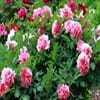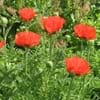Life Span
Perennial
Perennial
Type
Flowering Plants, Herbaceous Perennial
Fruit
Types
Bowl of Beauty, Laura Dessert
Actinidia deliciosa chlorocarpa, Actinidia deliciosa deliciosa
Number of Varieties
Not Available
Habitat
Dappled Shade, Woodland Garden
Mountain forests
USDA Hardiness Zone
4-8
6-9
Sunset Zone
A3, 1a, 1b, 2a, 2b, 3a, 3b, 4, 5, 6, 7, 8, 9, 10, 11, 12, 13, 14, 15, 16, 17, 18, 19, 20, 22
4, 5, 6, 7, 8, 9, 12, 14, 15, 16, 17, 18, 19, 20, 21, 22, 23, 24
Habit
Clump-Forming
Vining/Climbing
Minimum Width
Not Available
Flower Color
White, Light Pink
Light Yellow, Ivory
Flower Color Modifier
Bicolor
Bicolor
Fruit Color
Not Available
Tan, Brown
Leaf Color in Spring
Red, Dark Green, Bronze
Green, Light Green
Leaf Color in Summer
Green, Dark Green
Green
Leaf Color in Fall
Green, Dark Green, Bronze
Light Green, Yellow green
Leaf Color in Winter
Not Available
Light Green
Leaf Shape
Lance shaped
Heart-shaped
Plant Season
Spring, Summer
Spring, Summer, Fall
Sunlight
Full Sun, Partial Sun
Full Sun, Partial Sun
Type of Soil
Clay, Loam, Sand
Clay, Loam
The pH of Soil
Acidic, Neutral, Alkaline
Acidic, Neutral
Soil Drainage
Well drained
Average
Bloom Time
Late Spring, Early Summer
Late Spring, Early Summer
Tolerances
Not Available
Drought
Where to Plant?
Ground
Ground
How to Plant?
Root Division, Seedlings
Layering, Softwood cuttings
Plant Maintenance
Medium
Medium
Watering Requirements
Allow soil to be completely dry in between waterings, Water Deeply
Water daily during growing season
In Summer
Lots of watering
Lots of watering
In Spring
Moderate
Moderate
In Winter
Average Water
Average Water
Soil pH
Acidic, Neutral, Alkaline
Acidic, Neutral
Soil Type
Clay, Loam, Sand
Clay, Loam
Soil Drainage Capacity
Well drained
Average
Sun Exposure
Full Sun, Partial Sun
Full Sun, Partial Sun
Pruning
Remove damaged leaves, Remove dead branches, Remove dead leaves
Prune for shortening long shoots, Prune in early summer, Prune in late winter
Fertilizers
5-10-10 fertilizer
Self-fertile
Pests and Diseases
Leaf Blotch, Ringspot virus, Stem rot, Tip blight, Verticillium Wilt
Armillaria root rot, Armored scales, Bleeding canker, Botrytis Blight, Crown gall, Nematodes, Phytophthora Root Rot, Red blotch
Plant Tolerance
Drought
Drought
Flower Petal Number
Double
Single
Foliage Texture
Coarse
Medium
Foliage Sheen
Glossy
Matte
Attracts
Ants, Butterflies, Not Available
Not Available
Allergy
no allergic reactions
Inflammation, Mouth itching, Throat itching
Aesthetic Uses
Cut Flowers, Showy Purposes
Not Used For Aesthetic Purpose
Beauty Benefits
Not Available
Beautiful Skin, Protects from sun damage
Environmental Uses
Air purification
Air purification
Medicinal Uses
Alterative, Analgesic, Anodyne, anti inflammatory, Antibacterial, Antiseptic, Hypotensive, Tonic
constipation, Heart problems, Low Blood Pressure
Part of Plant Used
Root, Seeds, Stem
Fruits
Other Uses
Eaten in a broth, Powdered and mixed with tea
Used As Food, Used for its medicinal properties
Used As Indoor Plant
Yes
No
Used As Outdoor Plant
Yes
Yes
Garden Design
Cutflower, Feature Plant, Foundation, Mixed Border
Edible, Fruit / Fruit Tree, Rock Garden / Wall, Vine
Botanical Name
PAEONIA lactiflora 'Shirley Temple'
ACTINIDIA deliciosa
Common Name
Double Pink Peony, Garden Peony
Chinese Gooseberry, Fuzzy Kiwi, Kiwi
In Hindi
Double Pink Peony
कीवी फल
In German
Doppelte rosa Pfingstrosen
Kiwi, Chinesischer Strahlengriffel
In French
Double Rose pivoine
Kiwi, Groseille de Chine, Yang Tao, Souris végétale
In Spanish
Doble Pink Peony
kiwi, kivi, actinidia
In Greek
Διπλό Ροζ Παιωνία
Ακτινίδια
In Portuguese
Duplo Pink Peony
Quiuí
In Polish
Podwójne Pink Peony
Owoc kiwi
In Latin
Geminus Pink AGLAOPHOTIS
Kiwi fructum
Phylum
Magnoliophyta
Magnoliophyta
Class
Magnoliopsida
Magnoliopsida
Order
Dilleniales
Ericales
Family
Paeoniaceae
Actinidiaceae
Clade
Angiosperms, Core eudicots, Eudicots
Angiosperms, Asterids, Eudicots
Tribe
Not Available
Not Available
Subfamily
Not Available
Not Available
Number of Species
Not Available
Season and Care of Double Pink Peony and Kiwifruit
Season and care of Double Pink Peony and Kiwifruit is important to know. While considering everything about Double Pink Peony and Kiwifruit Care, growing season is an essential factor. Double Pink Peony season is Spring and Summer and Kiwifruit season is Spring and Summer. The type of soil for Double Pink Peony is Clay, Loam, Sand and for Kiwifruit is Clay, Loam while the PH of soil for Double Pink Peony is Acidic, Neutral, Alkaline and for Kiwifruit is Acidic, Neutral.
Double Pink Peony and Kiwifruit Physical Information
Double Pink Peony and Kiwifruit physical information is very important for comparison. Double Pink Peony height is 90.00 cm and width 90.00 cm whereas Kiwifruit height is 610.00 cm and width Not Available. The color specification of Double Pink Peony and Kiwifruit are as follows:
Double Pink Peony flower color: White and Light Pink
Double Pink Peony leaf color: Red, Dark Green and Bronze
Kiwifruit flower color: Light Yellow and Ivory
- Kiwifruit leaf color: Green and Light Green
Care of Double Pink Peony and Kiwifruit
Care of Double Pink Peony and Kiwifruit include pruning, fertilizers, watering etc. Double Pink Peony pruning is done Remove damaged leaves, Remove dead branches and Remove dead leaves and Kiwifruit pruning is done Prune for shortening long shoots, Prune in early summer and Prune in late winter. In summer Double Pink Peony needs Lots of watering and in winter, it needs Average Water. Whereas, in summer Kiwifruit needs Lots of watering and in winter, it needs Average Water.





